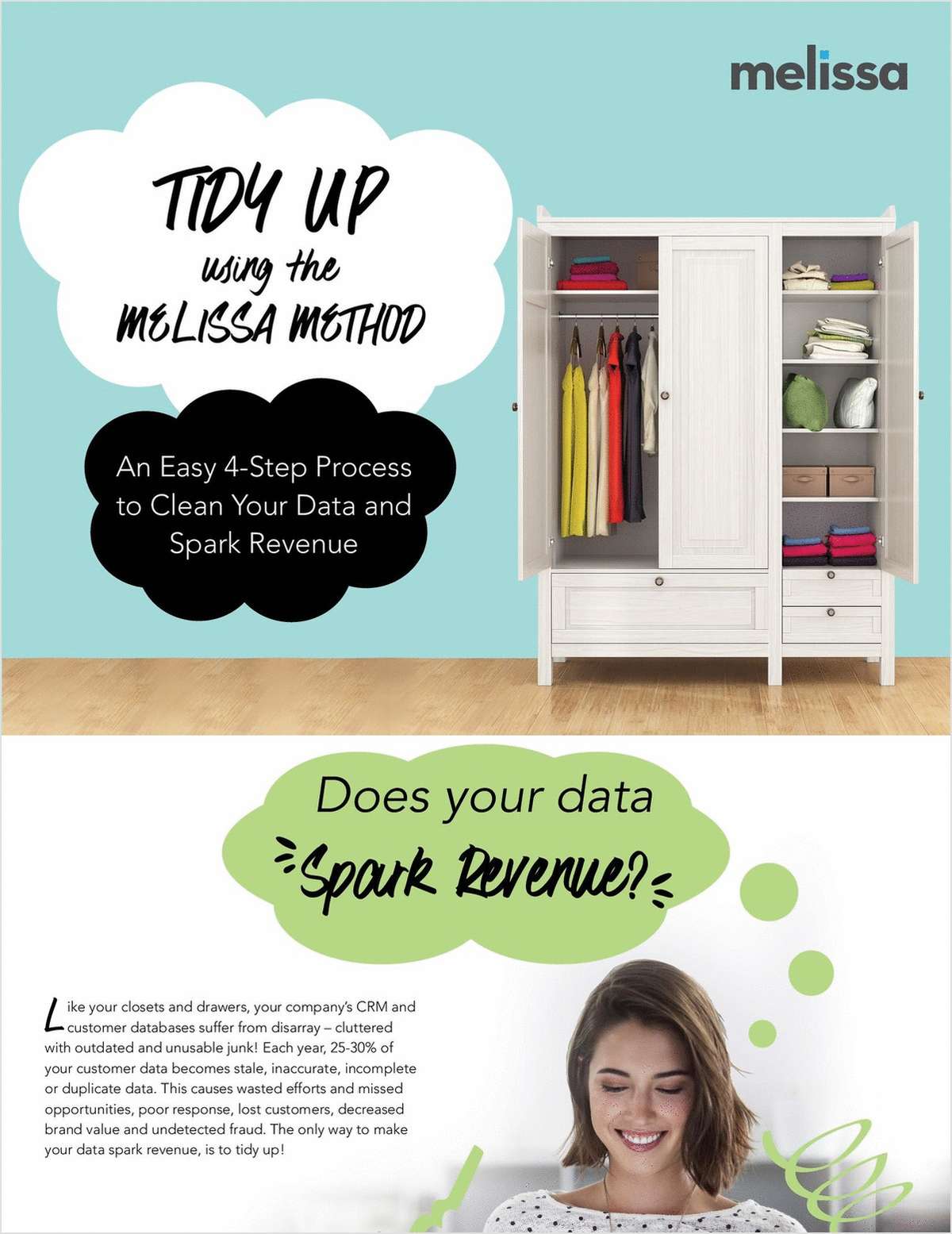What do insurance loss runs and Rodney Dangerfield have incommon? They both get no respect. Few insureds ever seem to see aninsurance loss run they like. Talk to policyholders, and a petpeeve many have are those confounding printouts! Whether generatedby insurers or by third-party administrators (TPAs), loss runs aresore points with many clients, satisfying almost no one.
|Too much information, and customers say theyreincomprehensible.
|Skimp on the data, and theyre meaningless.
|Whats a happy medium?
|On a fun scale, deciphering loss runs ranks with root-canaltherapy and reading minutes of Federal Reserve Board meetings. Fewseem to have a loss run they think is a good model or template.CIOs and tech professionals need not, however, resign themselves tothe fact that there isnt a format out there that satisfies anyone.Loss runs can, however, be good for something other thanfunctioning as oversized paperweights.
Lets see what insurance customers say about typical loss-rundeficiencies before turning to ways to improve them.
Inaccuracy Woes
|Sometimes the problem is not with the loss runs format but withdata reliability. Precision and accuracy often are elusive. Theoperative expression is garbage in and garbage out (GIGO).According to Bob Morrissey, senior partner with MSA InsuranceOperations Consultants, in New Jersey: My experience with loss runsis not so much their clutter with superfluous or blank sections,its the inaccuracy. Often, customers list loss-run inaccuracy asthe major problem with their carrier and that they dont tie intopayment screens. For example, he recalls one client had loss-runtotals that were $4,000 over the payment screen. Four thousanddollars may seem immaterial, but multiply that by the number ofclaimants, and it is quite substantial. So, Morrissey concludes,while a simple format is necessary, accuracy is more critical.
|Often, though, the concerns involve loss-run format andexpandability. Dave Parker, Pima County, Ariz., risk manager,operates the computer system for all state claims, a custom programrunning on an IBM mainframe. Originally, Parker hated loss-runreports. After I was given the ability to run my own reports withthe parameters I needed, he notes, we found a happy medium. Gettinga run of all losses, or our favorite triangulation report, usuallydoesnt do anything except tell us how many cases we had and how thecosts developed. You need the ability to ask, What if? It is theability to tailor the printouts that makes the system valuable.
|Thus, adaptability is a key loss-run feature. Like designingcomputer systems, crafting a loss run frequently is an experiencewhere users later think of wants and needs that never occurred tothem during the original planning process. If clients want to makechanges later, they should be able to perform that task.
John Price, a consultant with Safety Management Services, recalls,Years ago, Travelers had a fair loss run for workers compensation.He adds, however, You had to be a big-time operator to get it. Thenthey came out with FOCUS, and that was an improvementlet the safetytypes design the runs tailored to the client. It was nice buttime-consuming.
When I came to California, Price adds, someone had saturated theworkers compensation market with Wang computer systems and a fairlystandard workers compensation loss run. In short, it inhaled withgreat vigormost of them still do. The information is factual butone dimensional. Loss data is multifaceted and should be reportedthat way. Listing only by employee, department, cost, body part,time of day, etc., doesnt tell the whole story.
|Doing ergonomic consulting, Price continues, Id take the lossruns, build my own database, and create my own reports using eitherdBase or Reflex. Time-consuming and expensive, but the data I gotout was invaluable. I could pinpoint where in the plant what typeof injuries were occurring. This let me focus my on-site time andidentify the causes of the injuries.
|Other concerns surface when loss runs are designed for thecorporate bean counters.
|Financial Overkill
|Problems also arise when CIOs focus loss runs exclusively orpredominantly on financial data. This is especially true wheninsurance customers want to use the printouts as loss-controltools. According to Price, Most loss runs are designed forfinancial information only. This is a serious mistake. It causesinsureds to focus on costs and not injury reduction. Theinformation is nice to have, can be used by CFOs to guess how muchthey will pay/get back at the end of the year, but the dollarnumbers really dont help the poor safety person in the plant.
|What I would like to see is a cross-tabulation of some of thedata in addition to the dollar figures, Price continues. Somethingsuch as body part and injury type all indexed by departments.Unfortunately, this takes time and costs money for the MIS types tofigure out. Thats why I never could get management to make thechanges I wanted. All of the revisions I have seen come out of MISdepartments for the past 10 years are simple format changes toexisting financial information. Nothing substantive.
|Speaking with consumers of loss runs, therefore, four tips forCIOs and tech professionals emerge:
|Adopt the KISS principleKeep It Short and Simple. The worldsgreatest loss run is worthless if no one can decipher it.
Customize. Let clients customize, within reason. Some clients wantdata sliced and diced one way; others want it organized andformatted differently. One client might want to know whats causingall the fleet vehicle accidents; another might want to know thetime of day when most accidents occur. These nuggets may haveprofound safety and loss-control implications for all sidesinvolved.
Offer it online. More and more customers are accustomed to beingable to retrieve their financial information online. This includeschecking- and savings-account data, bills, 401(k) statements,brokerage statements, and the like. Why not loss runs, too, on aread-only basis?
Seek customer/client feedback. Incorporate that feedback. Makeclients a partner in the loss-run design process. Ask them: Whatare the three things you would change about our loss runs, if youcould?
Design Considerations
If an organization opts to self-insure, or to absorb a highself-insured retention (SIR), reliance on insurer-generated lossruns diminishes or disappears. At this point, organizationsinternalize the loss-run function. Thus, risk managers may findthemselves as loss-run consumers for those exposures they insureand loss-run manufacturers for those exposures they retain orself-insure. Then the risk manager must design a report that isintelligiblenot only to risk professionals but to upper managementand all divisions. The latter is a particularly keen considerationwhen loss-allocation systems tie division operating resultsandmanager bonusesto losses. At that point, the manager even may startempathizing with insurers that fielded gripes about loss runs beinghard to read, reserves set too high, or numerical errors inprintouts.
Another option for high SIR or totally self-insured clients isto externalize the task by hiring a third-party claimsadministrator to handle claims. Typically, part and parcel of theTPAs job duties include generating loss runs. The ability togenerate prompt, error-free, and useful loss runs is a given on anyrisk managers shopping list when weighing proposals of competingTPAs.
|In designing state-of-the-art loss runs, regardless of whetherthe focus is workers compensation claims, automobile, homeowners,or contractors liability, include certain bedrock data: policynumber, claim number, claimants name, insured, loss date, briefloss description, damages/injuries, reserves, payments,jurisdiction. These often are must haves for anyinformation-conscious company aiming to use loss runs as tools formanaging risk and preventing future losses.
|In the nice-to-have category: litigation status (pre-suit,in-suit, on appeal?), name of claimants/plaintiffs counsel, name ofdefense counsel, subrogation potential, punitive damages alleged,coverage questions, name/address of TPA handling file, diarydate.
|Of course, soon you can have a loss run that consumes a page ormore per claim. At this point, detail may overwhelm loss-runmanagers and become mind numbing. In designing loss runs, adelicate balance exists between comprehension and detail. Sometimesless is more.
|Too much information, and customers are baffled or turnedoff.
|Too little information, and users consign loss-run printouts tothe dumpster.
|Loss-run design may not be the most exciting part of being a CIOor tech professional, but the state-of-the-art printout can becomea useful tool for companies sifting through data to save money bypreventing future losses.
|Turn Loss Runs into Safety Weather Vanes
|If youre a CIO seeking a back to basics grounding in loss runs,here are five items to look for on loss runs from the insurancecompany:
|1. Specificity. Claims involving hurt back or injured hand willnot help clients. (Keep in mind the people completing the accidentreports may not be the same users who review the loss runs or usethem as safety tools.) Determine exactly what happened in theincident.
2. What body part was injured? Left leg or right? Are multipleareas of injury captured or just the most prominent.
3. What happened? Get specific. If someone slipped at aconstruction site, did he fall or not? Did she slip on ice, grease,or water?
4. What was the cause? Within the bounds of brevity, the loss runshould state reasons.
5. What was the injury? Was it a laceration, a bruise, a burningsensation in the lower back?
Kevin Quinley, CPCU, ARM, AIC, AIM is senior vice president,Risk Services, Medmarc Insurance Co., Chantilly, Va. He can bereached at [email protected] or www.kevinquinley.com.
Want to continue reading?
Become a Free PropertyCasualty360 Digital Reader
Your access to unlimited PropertyCasualty360 content isn’t changing.
Once you are an ALM digital member, you’ll receive:
- All PropertyCasualty360.com news coverage, best practices, and in-depth analysis.
- Educational webcasts, resources from industry leaders, and informative newsletters.
- Other award-winning websites including BenefitsPRO.com and ThinkAdvisor.com.
Already have an account? Sign In
© 2024 ALM Global, LLC, All Rights Reserved. Request academic re-use from www.copyright.com. All other uses, submit a request to [email protected]. For more information visit Asset & Logo Licensing.








